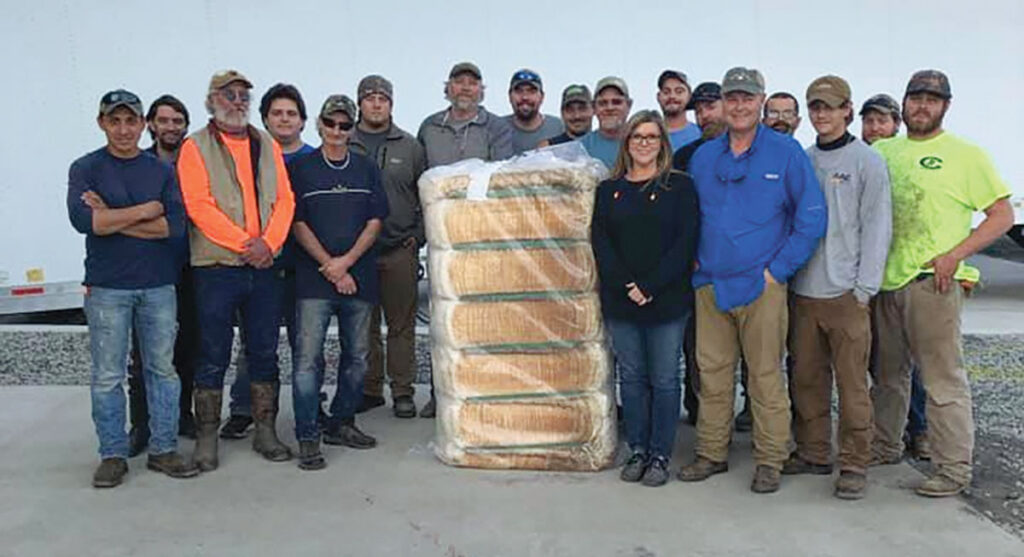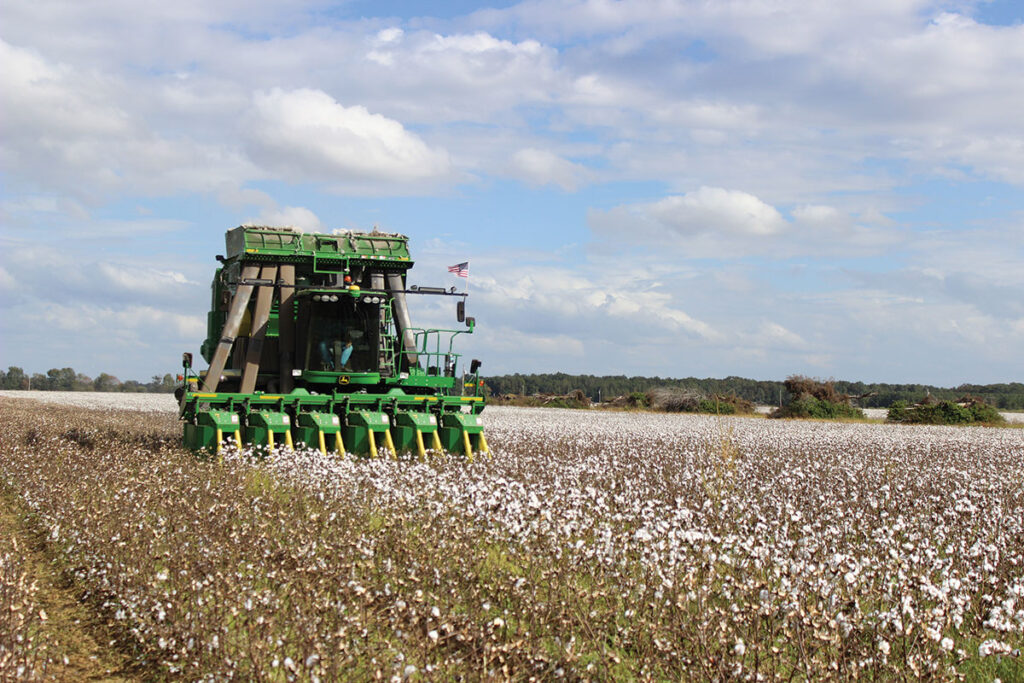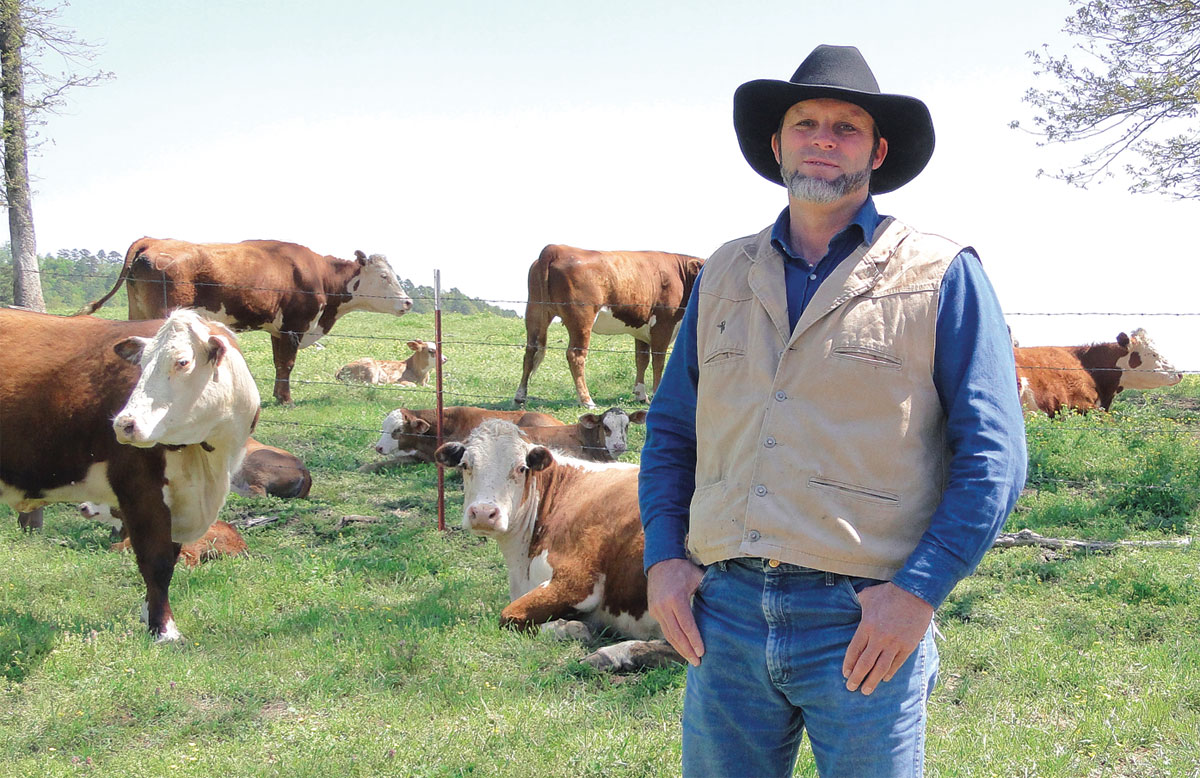
The Tripp family’s cotton operation continues to grow and expand
Billy Tripp raised rice, corn and soybeans outside of Griffithville, Ark., in White County.
Three years ago, he decided he wanted to try something different, something that would provide greater profitability. He chose cotton, which hadn’t been grown in White County for more than 50 years. His use of value adding to improve the bottom line was building a gin, choosing recyclable materials for irrigation, custom baling cotton and using all three of the commercial parts of the cotton boll.
Ray Tripp, Billy’s grandfather, moved to the area in the 1950s and purchased 125 acres where he raised strawberries and cotton. Cotton picking machines were then in early development and not readily available, which meant all of the cotton had to be picked by hand. Billy’s father, Billy Ray, eventually bought the farm from his grandfather with the farm later passed down to Billy. Billy Wayne eventually increased the acreage to 5,000 acres and decided to go back to his cotton raising heritage.
While Billy and his future wife Kim knew each other since grade school, they married later in life. Cotton was a common denominator between Kim and Billy because she had been raised by her father Elmo Ellis on a soybean and cotton farm.
“You might say our marriage was a merger as well as a marriage,” Karin said with a laugh.
Tripp Farms dedicated 800 acres to the new cotton crop the first year and 1,400 acres the next. Because the Tripps were Monsanto dealers through their Searcy Farm Supply store, they purchased the Monsanto Delta Pine variety of seeds. After harvesting the first crop, Billy discovered traveling 140 miles one way to the closest gin mill was a big expense, seriously cutting into the greater profit he was seeking. Consequently, he decided to build a gin on the highway side of his property, directly across from the scales previously used for grain. The location provided easy access as well as the essential scales. Billy believed the gin would be a boon to the county’s economy by minimizing transportation costs for other producers while providing well-paid, skilled jobs for community members.
The third year, the Tripps raised 4,500 acres of cotton, with the last 500 dedicated to raising corn for local deer hunters. That year, 45,000 bags of corn weighing 50 pounds each were sold within a one-hour radius.
Their plan for a cotton gin began with groundbreaking in January 2020. However, construction was sidetracked from being ready for harvest production because of COVID. One impact was the inability to get parts when they were ready to install them.

“We wanted to process our cotton which is typically harvested in late September or early October,” Billy explained. “However, members of the construction crew had family members get sick which meant they had to quarantine rather than work. Consequently, we then had to store our cotton until the gin was ready to go at the end of October ending up with 14,000 bales. Our goal for 2021 is 25,000 bales.”
Another goal for the gin is to increase production hours from one shift of eight people to three shifts. A challenge, according to Billy, will be finding 24 skilled people willing to work the various shifts.

Cotton fields covering 4,500 acres required additional expenses. These include the construction of a warehouse, four cotton picking machines and trucks to haul the cottonseed and cotton hulls byproducts to their store. Cattle and dairy producers use the cotton seeds to add nutrition and the hulls to add fiber to their herds’ diets.
The annual cotton cycle begins in April when the land is fertilized with commercial fertilizer and beds are built by hipping the ground. The seeds are planted in May followed by applying Warrant Pre-Emerge herbicide. Tony Holder, a crop consultant and cotton scout, checks the cotton fields weekly for harmful insects. When he finds any, he then informs the Tripps where spraying is needed, with pesticides being applied eight times last year. A bug called thrips sucks on a small plant and will destroy it if not eliminated by immediate spraying.
Another part of the annual process is using irrigation. Recyclable poly pipes are laid along the end of the field hips. Holes are punched at each hip so gravity powered water travels where needed. Last year, the fields required 150 quarter mile long rolls with the used roles returned at the end of the growing season to the manufacturer for recycling.
Cotton is fertilized again in June and harvested at the end of September or early October, with four cotton pickers each harvesting 80 to 100 acres a day. As part managing the bottom line, the Tripps also custom pick cotton for those producers who do not own a picker.
Harvested cotton is placed in big, round modular bales weighing 5,000 pounds. Those bales are then brought to the gin modulator feeder which moves the cotton through the gin. The cotton is first separated from debris and then cleaned and delivered to gin stands that separate the lint from the seed and hulls. The lint continues to the press where it is compacted into little bales about the size of a hay bale but weighing an impressive 480 pounds. The bales are then sold and sent to a warehouse in Memphis, which subsequently sells them overseas.
Billy and Kim’s son Tate is a very important member of the family team. Last year he was in charge of the cotton pickers and will be again this year. He oversees the process as well as maintaining and repairing the equipment which has computerized systems. Tate was hooked into his love of machinery when he was allowed to drive a small tractor when only 4. He was put in a hay field and was so small Billy and Kim couldn’t see him though they could see his joy as he drove around and around the field.







